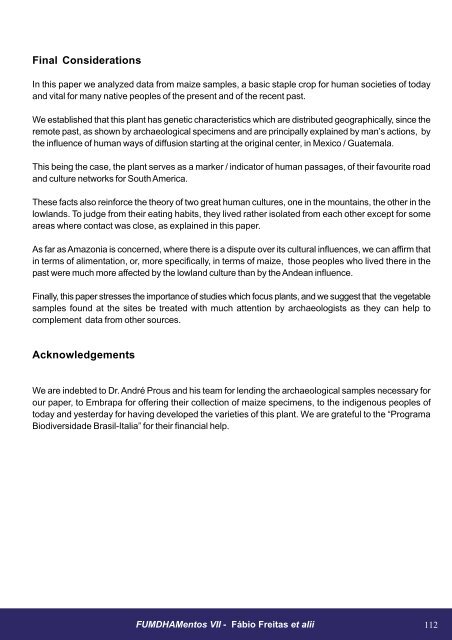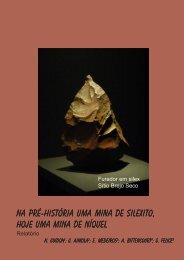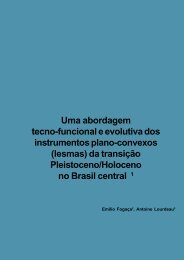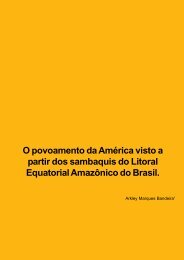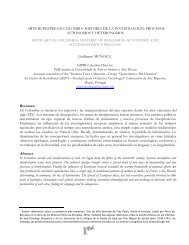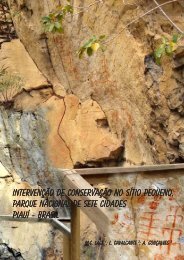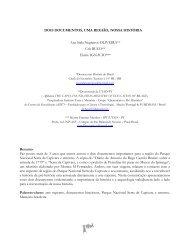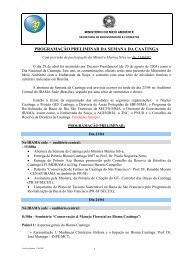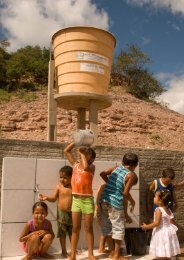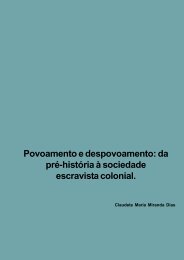O Homem seguiu as plantas ou as plantas seguiram o Homem?
O Homem seguiu as plantas ou as plantas seguiram o Homem?
O Homem seguiu as plantas ou as plantas seguiram o Homem?
- No tags were found...
Create successful ePaper yourself
Turn your PDF publications into a flip-book with our unique Google optimized e-Paper software.
Final Considerations<br />
In this paper we analyzed data from maize samples, a b<strong>as</strong>ic staple crop for human societies of today<br />
and vital for many native peoples of the present and of the recent p<strong>as</strong>t.<br />
We established that this plant h<strong>as</strong> genetic characteristics which are distributed geographically, since the<br />
remote p<strong>as</strong>t, <strong>as</strong> shown by archaeological specimens and are principally explained by man’s actions, by<br />
the influence of human ways of diffusion starting at the original center, in Mexico / Guatemala.<br />
This being the c<strong>as</strong>e, the plant serves <strong>as</strong> a marker / indicator of human p<strong>as</strong>sages, of their fav<strong>ou</strong>rite road<br />
and culture networks for S<strong>ou</strong>th America.<br />
These facts also reinforce the theory of two great human cultures, one in the m<strong>ou</strong>ntains, the other in the<br />
lowlands. To judge from their eating habits, they lived rather isolated from each other except for some<br />
are<strong>as</strong> where contact w<strong>as</strong> close, <strong>as</strong> explained in this paper.<br />
As far <strong>as</strong> Amazonia is concerned, where there is a dispute over its cultural influences, we can affirm that<br />
in terms of alimentation, or, more specifically, in terms of maize, those peoples who lived there in the<br />
p<strong>as</strong>t were much more affected by the lowland culture than by the Andean influence.<br />
Finally, this paper stresses the importance of studies which focus plants, and we suggest that the vegetable<br />
samples f<strong>ou</strong>nd at the sites be treated with much attention by archaeologists <strong>as</strong> they can help to<br />
complement data from other s<strong>ou</strong>rces.<br />
Acknowledgements<br />
We are indebted to Dr. André Pr<strong>ou</strong>s and his team for lending the archaeological samples necessary for<br />
<strong>ou</strong>r paper, to Embrapa for offering their collection of maize specimens, to the indigen<strong>ou</strong>s peoples of<br />
today and yesterday for having developed the varieties of this plant. We are grateful to the “Programa<br />
Biodiversidade Br<strong>as</strong>il-Italia” for their financial help.<br />
FUMDHAMentos VII - Fábio Freit<strong>as</strong> et alii 112


